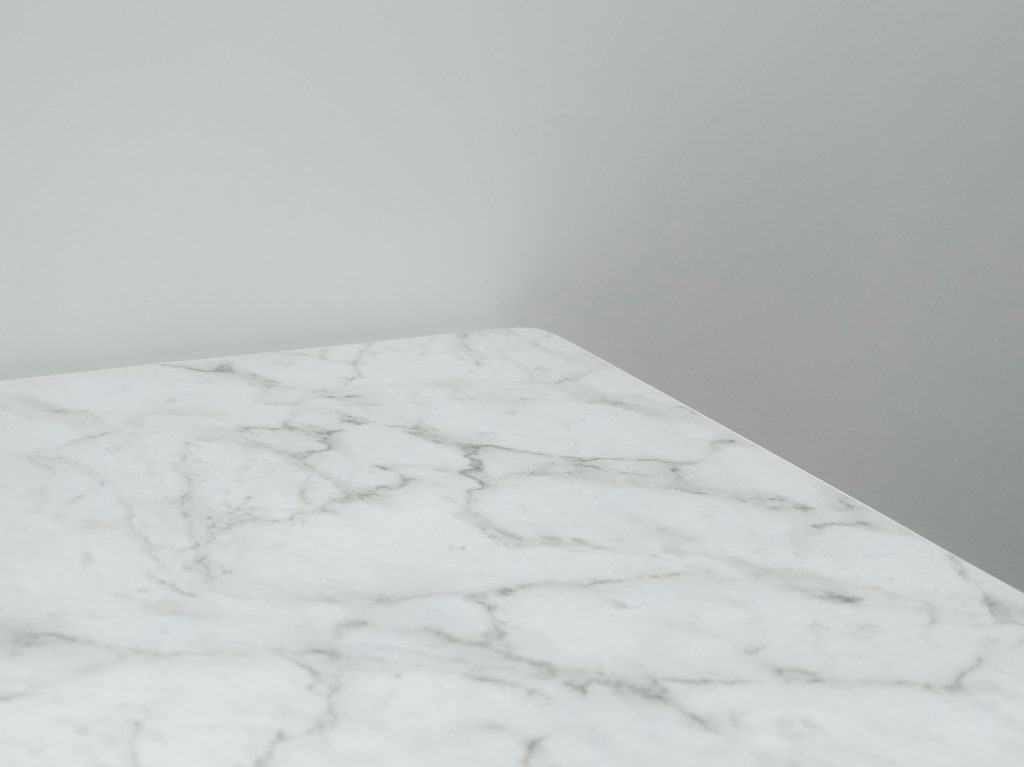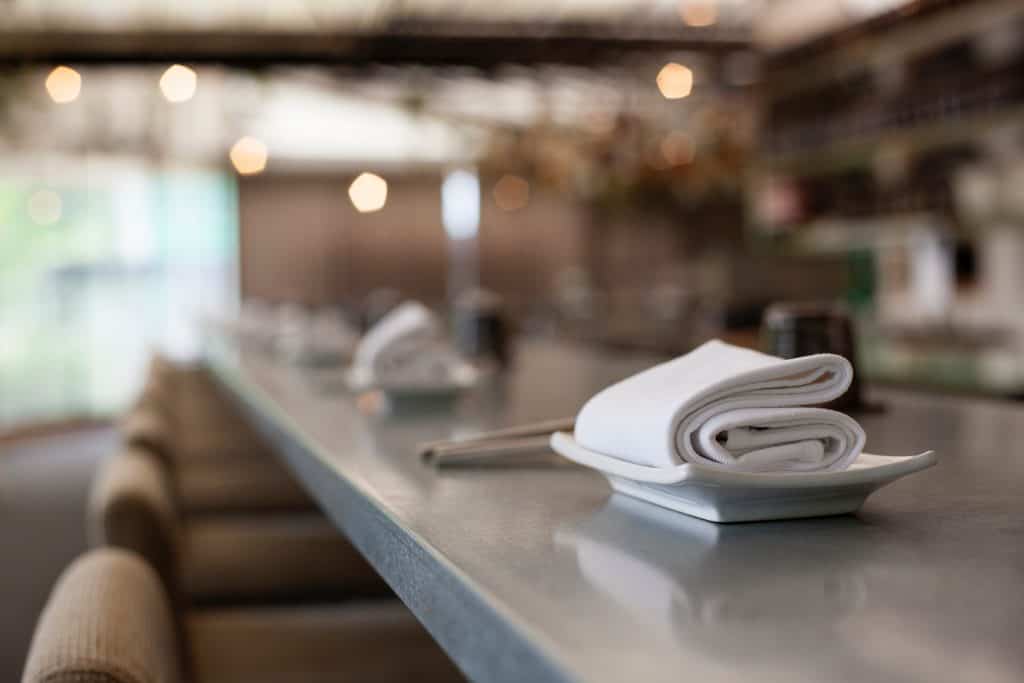As an Amazon Associate we earn from qualifying purchases.
Corian is one of the most recommended materials you can use if you’re planning to design kitchen countertops. This material is distinctively invented synthetic material. In fact, the element came over the mixture of acrylic polymer or trihydrate.
When combined appropriately, such compounds can become diverse in texture, color, design, and styles. Today, house contractors and developers chose to utilize Corian. This is due to its aesthetics as well as its ergonomics. Unlike other materials, this one is very easy to clean and maintain and is durable.
If you want to use this material, you need to learn how to cut Corian. With the right knowledge and tools, you’ll be able to do this easily.
Contents
How to Cut Corian
Here is how to cut your corian countertops accurately:
What You Will Need
- Wood bar clamp, small bar clamp, C Clamp, or spring clamp
- Triple chip blade made out of tungsten
- Leveler (optional)
- Circular saw
- Stable work surface
- Grease marker
- Goggles or protective eyewear
- Retractable measuring tape
- Respirator or a top-notch dust mask
- A cutting table, stable workbench, or two sawhorses
- Sander
- Sandpaper

Saws for Cutting Corian
Aside from a circular saw, you can use any of the following saws to cut your Corian:
- Radial arm saws
- Vertical panel saws
- Beam saws
- Drop-cut saws
- Saw beds that have a sliding tray
- Portable circular saws
If you are only making a small cut, the best tool you can use is the belt sander. This is a very accurate tool that can help you shave off small slices at a time.
Another good tool for cutting Corian is a durable router with a fence and a straight bit.
However, there are saws that you shouldn’t utilize for working with Corian such as:
- Saber Saws
- Hacksaws
- Saws that have ripping blades
Blade Requirements
Aside from a triple-chip tungsten carbide blade, you can also use other blades. Make sure they are designed for cutting hard plastics and have six teeth on every 1-inch. When buying a blade, you should look for one that has 40 teeth or 7 ½” blade.
Step 1: Setting Up and Measuring the Cut
- Measure the area: Using your measuring tape, take accurate measurements for the width, height, length, and depth. Check the measurements again before putting a mark on the Corian to avoid wasting the material. Also, take down the measurements on paper so you’ll have a reference.
- Position your Corian inverted on top of the work surface: You’ll need to use either a cutting table, stable workbench, or two sawhorses to cut your material. However, if you’re working with a big slab of Corian, you’ll need to use a bigger bench.
- Mark the area where you’re going to make cuts: Using a grease marker, mark out the area where you are going to make cuts. When putting marks make sure to do this in the underside of the material. To keep your hand stable as you draw the cut lines, use a straight edge and tilt your marker at a 45-degree angle.
- Pick the correct blade: The blade needs to be a triple-chip grind as well as made of tungsten carbide. Remember, using the inappropriate blades may damage your circular saw or your Corian.
- Fasten your blade on your saw: When making cuts, you can use a saw. In this guide, I will show you how to cut Corian using a circular saw. However, it is important that you use a triple-chip grind tungsten carbide blade.
- Wear protective gear: Though the chemicals found in Corian are not toxic, there are actually health risks related to cutting this material. The dust which is produced by cutting may possibly damage your lungs, eyes, and throat. Before you cut, make sure to wear a respirator and protective eyewear.

Step 2: Cutting Corian Using A Circular Saw
- Place a straight edge next to your guiding line using clamps: Clamp a leveler 1.5 inches away from the grease marking, corresponding to the guiding lines you are going to cut. To ensure that your grease marking and guiding line is on top of one another put the base plate of your circular saw toward the straight edge. If you need to move the edge you have to make adjustments to the position of your leveler.
- Place your saw on top of the grease marks: On the edge of your Corian, use your guiding lines on the base plate of the miter or circular saw to put a line it with your marker where you want to cut. Then set the extent of the blade by utilizing the lever on the side. Before you lock it in, you need to lift the blade.
- Position the saw over the Corian: Make your saw blade spread out slightly further than the bottom of the Corian slab, approximately 1inch – 2inch. Also, before you make cuts, make sure to place your both hands on the upper handle of your saw.
- Tweak the saw’s trigger and cut along your line: Before moving your saw forward, wait for the blade to spin at maximum speed. Slightly, push your circular saw forward. As the blade starts to cut the material, make sure to stop pushing it. The tool will efficiently do the job for you while the blade pulls it forward naturally.
Once your cut is completed, you need to wait for the blades to stop completely before moving it. See to it that you are cutting from the back.
A few important notes:
- If you come across smoke or kickback make sure to release the trigger. In fact, the friction between the Corian and blade will create lots of heat.
- Also, if your tool begins to smoke, it means that you are moving too fast. If this happens, you need to wait for a couple of minutes to cool down your saw blade.
- If your saw blade jumps as you cut and begins kicking back, let go of the trigger and wait for a few minutes before cutting again.
Step 3: Finishing Your Edges
- Check the edges: Look along each edge where you make cuts and inspect for any lumps of Corian which you may possibly miss with your saw. When installing this material in your countertop, it should be flat. If you overlooked sections, cut them again by reattaching your saw.
- Carefully prepare the sander: To start smoothing the edges of your Corian you need to utilize medium-grit sandpaper. Attach the sandpaper to the sander and then switch it on. Make sure to hold it up to the Corian and press it into the material carefully so that it will rest on top.
- Slowly sand the Corian: Slide your heavy-duty sander from side to side along every section of the border to get rid of sharp edges as well as excess bumps. When finishing your edges you can either use a sanding disc or sanding belt. These tools will help you in getting the job done more rapidly. However, you can also sand the material using your hands. It will not give you a uniform finish and take rather a bit of time and energy.
- Use a higher grit when needed: If the edges and the sides of your material are still uneven after two to three applications, consider using a 320 to 400 grit sandpaper. Lighter sandpapers help in wearing away the little grooves and bumps in the Corian. If you are having a hard time obtaining a clean and smooth finish, then use sandpaper that has a higher grit.
- Run your hand along the edges slowly: Without putting any pressure, inspect the edges by running your hands along them. If the sides have a smooth feel, then it is safe to say that you have finished sanding your material and it is all set for installation. However, if the edges feel bit coarse or bumpy, then keep on sanding before you test them again.
How to Glue Corian Using an Epoxy Glue
Corian only requires an adhesive to secure them to the core surface. What’s more, you can install this material over existing pieces of the laminate by gluing it on.
It’s not always easy to look for the best product to glue the material. Basically, Corian is made of polymer and acrylic. Epoxy glue can be utilized to make Corian stick together. You also need to utilize color-matching silicones to muddle the countertop.
Follow the steps below on how to glue Corian using a glue.

What You Will Need
- Fine-grit sandpaper
- Epoxy Glue
- Power sander
Steps for Glueing Corian
- Prepare your Corian. Before applying the glue, experts tend to utilize denatured alcohol to clean the copulating ends. By doing this, you’re certain that the edges will have a stronger grip.
- Apply the epoxy glue. With a caulking gun, the epoxy glue must be applied on both surfaces. Instead of wiping off the excess glue, let it dry and then sand it off once it is completely dry.
- Conceal the seams. As soon as the glue has cured you need to sand the excess using a power sander and fine-grit sandpaper. One way to conceal the seams is to look for a water-resistant silicone that will match the current color of your counter. Then apply it to the seams.
To make the seams almost invisible, you need to wipe off the excess using a sponge.
Conclusion
Learning and knowing how to cut Corian is a simple process. You just need the right tools to make sure your cuts are clean, smooth, and most importantly straight.
Unlike other materials out there, Corian is actually prone to be gouged or chipped if you cut the job harshly. That’s why you need to be very careful. You don’t want to damage a material that is quite expensive.
When cutting Corian, make sure to wear a dust mask and eye protection.
Now that you have read this guide, you should be able to finish your kitchen or bathroom countertop installation project.

